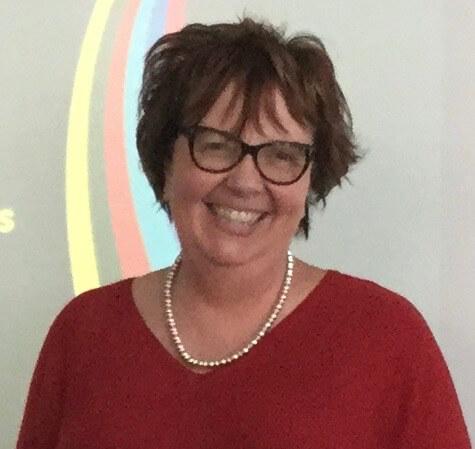IDEAS
Building blocks of collaboration
A variety of coaching roles can strengthen teams
By Chris Bryan and Brenda Kaylor
Categories: Coaching, Collaboration, FacilitationDecember 2018
Vol. 39 No. 6
In our work with schools and districts across the country, we find there is a strong expectation that collaborative teams will improve student learning. Many districts also expect instructional coaches to be a part of these teams, although there is much confusion about what roles they should play within a team.

We hear questions like: I wonder why my principal asks me to attend team meetings? What do I bring to this team? If I am not the facilitator, what should I be doing? Do teachers wonder why I am here? Do they see me as an evaluator or an outsider? Are they looking at me as someone who adds extra work or slows the team down? What exactly is my role?
Approaching collaborative work from a perspective of collective efficacy can help address these questions and clarify the coach’s role in teams. Collective efficacy is defined as a team’s belief in its capability to successfully accomplish specific goals and joint work (Bandura, 1997; Kreitner & Kinicki, 2007).
John Hattie, who regularly compares the effects of multiple educational policies and practices with a rigorous statistical method, ranks collective efficacy as a top factor in positively influencing student achievement (Hattie, 2015).
Developing collective efficacy takes concerted attention and leadership. Coaches are well-positioned to provide such leadership because of their skill sets and their responsibility to support teachers’ success. Furthermore, a frame of collective efficacy can focus coaches’ work with collaborative teams and provide entry points for action.
A COACHING FRAMEWORK FOR BUILDING COLLECTIVE EFFICACY
To guide coaches in building collective efficacy, we find very useful the work of Michael Fullan, who has identified five conditions that must be developed to foster collective efficacy (Fullan, personal communication, November 25, 2016; Hirsh, 2016):
- The team must create a culture based on trust.
- The team must commit to transparency in practice and results.
- The team must create a climate of nonjudgmentalism.
- The team must be specific in terms of the practices it will employ and actually employ them.
- The team must be clear on the specific evidence it will collect to document growth, and it must collect and use the evidence to improve professional practices.
Coaches can encourage and support all of these components of collective efficacy. How they do so will depend on their roles, in the school as a whole and in the team specifically, as well as on the team’s and the school’s needs. Coaches play many different roles.
There are times that an instructional coach must be the expert and operate in the role of consultant. Other times, an instructional coach works side by side with a team of teachers collaboratively. Often, a coach provides the team opportunities for reflective thinking, which can most deeply support the development of the team’s efficacy.
Each role is instrumental to building the elements of collective efficacy. Being specific about which role is needed and when can help coaches choose specific strategies.
In the sections that follow, we share examples of professional learning approaches that can be effective within each of the different roles. Adapting from the work of Lipton and Wellman (2001), we use the language of consultant, collaborator, and coach of reflective thinking to describe how an instructional coach might interact with collaborative teams focused on improving the five conditions for collective efficacy.
5 CONDITIONS FOR COLLECTIVE EFFICACY
1. The team must create a culture based on trust.
“The truth is that trust rules. Trust rules your personal credibility. Trust rules your ability to get things done. Trust rules your team’s cohesiveness. Trust rules your organization’s innovativeness and performance. Trust rules just about everything you do” (Kouzes & Posner, 2010).
Collective efficacy starts with trust. Coaches must be intentional about building and maintaining trust so that a safe learning space can exist. No substantive conversations about teaching and learning can occur without trust.
The work of Bryk and Schneider reveals the importance of developing relational trust in schools. Their studies show that when trust is absent, schools have a 1-in-7 chance of making gains with student learning (Bryk & Schneider, 2002). Trust must therefore be part of the initial and ongoing work coaches do in teams. Fortunately, there are many ways they can build trust, including those listed in the table at left.
2. The team must commit to transparency in practice and results.
“What do schools look like when all the adults in the school community care about the success of all the other adults?” (Rutherford et al., 2011, p. vi)
It is important for teams to openly examine their current practices in relation to student results and commit to being vulnerable for the sake of their own and their students’ learning. But some teams are not used to publicly sharing student data and discussing its relationship to their professional practices.
Once trust is in place, this kind of transparency is essential for practices to change and learning to improve. By using the professional learning approaches outlined in the table on p. 58, coaches can help make openness the norm and team members feel safe to share their work.
3. The team must create a climate of nonjudgmentalism.
“By transparency I mean openness about results. I also mean openness about what practices are most strongly connected to successful outcomes” (Fullan, 2008, p. 99).
Judgmental behaviors shut down team learning. When individuals operate from a place of fear, assumption, and generalization, understanding of other perspectives is limited. Meetings can become a place to vent or blame, which makes team members hesitant to share openly and in the spirit of learning.
The goal becomes self-preservation rather than what it should be: to create a safe learning environment for adults to take risks and experiment with a focus on their own and students’ learning.
Coaches can play an important role in establishing a nonjudgmental climate among teams by using the professional learning approaches in the table above right.
4. The team must be specific in terms of the practices it will employ and actually employ them.
“The main thing is to keep the main thing the main thing” (Covey, 2005, p. 160).
Ensure that the team stays focused on the school and district initiatives around learning and results. Although this may sound like common sense, it is often challenging for teams because of the many responsibilities and roles educators play.
Coaches can help team work stay focused by using a cycle of continuous improvement that begins with identifying what students and adults need to learn, clarifying what student and adult success looks like, determining multiple instructional pathways, and committing to bring student work back to the team for analysis and determination of next steps. Using this process includes the professional learning approaches outlined in the table on p. 59.
5. The team must be clear about the specific evidence it will collect to document growth, and it must collect and use the evidence to improve professional practices.
“The more you teach without finding out who understands the concepts and who doesn’t, the greater the likelihood that only already-proficient students will succeed” (Wiggins, 2006).
Collaborative teams should use student data to celebrate success, acknowledge gaps in learning, and respond to learner needs. Committing to a close examination of teaching practices and the impact of those practices on student learning is an indicator that the team is embracing collective efficacy because it is taking responsibility for student learning. Team members are aligning what they need to learn and do as educators to meet the needs of their students. They are recognizing that as a team, they have a greater opportunity to impact student learning than they would have as individuals.
COACHES AS CATALYSTS OF CHANGE
Coaches can use the collective efficacy framework described here to ensure teams are focused on developing the five conditions needed for developing collective efficacy. They can use it to diagnose a team’s needs and decide which type of coaching support to provide.
By focusing on teams, coaches are more likely to be catalysts for change at the school level. Too often, the work of coaches is focused only on building individual capacity. This can result in improved teaching and learning in individual classrooms but not in the school as a whole. Schools that develop collective efficacy are schools where all teachers and students can thrive and reach their potential.
References
Bandura A. (1997). Self-efficacy: The exercise of control. Available at https://www.uky.edu/~eushe2/Pajares/effbook11.html.
Bryk, A.S. & Schneider, B. (2002). Trust in schools: A core resource for improvement. New York, NY: Russell Sage Foundation.
Covey, S. (2005). The 7 habits of highly effective people. New York, NY: Simon & Schuster.
Fullan, M. (2008). The six secrets of change. San Francisco, CA: Jossey-Bass.
Hall, G. & Hord, S. (2001). Implementing change: Patterns, principles and potholes. Boston, MA: Allyn and Bacon.
Hattie, J. (2015). Hattie ranking: 195 influences and effect sizes related to student achievement. Available at https://visible-learning.org/hattie-ranking-influences-effect-sizes-learning-achievement.
Hirsh, S. (2016). Michael Fullan affirms the power of collective efficacy [Web log post]. Available at https://bit.ly/2OnWMZe.
Kouzes, J.M. & Posner, B.Z. (2010). The truth about leadership: The no-fads, heart-of-the-matter facts you need to know. San Francisco, CA: Jossey-Bass.
Kreitner R. & Kinicki A. (2007). Organizational behavior (7th ed.). Boston, MA: McGraw Hill/Irwin.
Lipton, L. & Wellman, B. (2001). Mentoring matters: A practical guide to learning-focused relationships. Sherman, CT: MiraVia.
Rutherford, P., Kaylor, B., Clayton, H., McVicker, J., Oliver, B., Stephens-Carter, S., & West, T. (2011). Creating a culture for learning. Alexandria, VA: Just ASK Publications.
Wiggins, G. (2006, April 3). Healthier testing made easy: The idea of authentic assessment. Edutopia. Available at www.edutopia.org/authentic-assessment-grant-wiggins.

Chris Bryan is a senior consultant with Learning Forward. She is also the professional development director for the organization One to One Women Coaching Women. Bryan draws on deep instructional experience to serve her clients and learning partners—from classroom teacher, learning specialist, mentor, and staff developer, to instructional coach and coach of coaches. Currently, she coaches school executives, school-based coaches, and other leaders of organizations.

Brenda Kaylor is senior consultant with Just ASK Publications and Professional Development.
Categories: Coaching, Collaboration, Facilitation
Recent Issues
TAKING THE NEXT STEP
December 2023
Professional learning can open up new roles and challenges and help...
REACHING ALL LEARNERS
October 2023
Both special education and general education teachers need support to help...
THE TIME DILEMMA
August 2023
Prioritizing professional learning time is an investment in educators and...
ACCELERATING LEARNING
June 2023
Acceleration aims to ensure all students overcome learning gaps to do...











